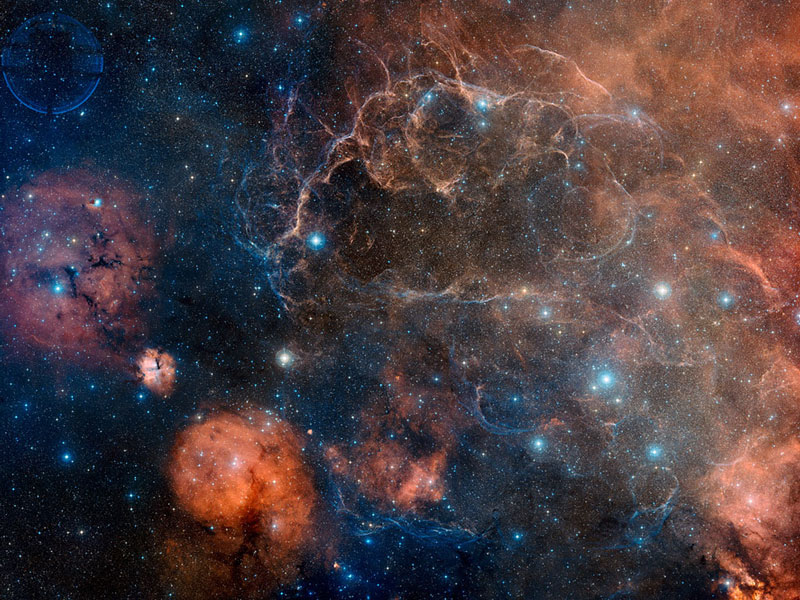
|
Credit: Davide De Martin (Skyfactory)
Explanation:
The explosion is over but the consequences continue.
About eleven thousand years ago a star in the constellation of
Vela could be seen
to
explode,
creating a strange point of light briefly visible to humans living near the beginning
of
recorded history.
The outer layers of the star crashed into the
interstellar medium, driving a
shock wave that is still visible today.
A roughly spherical, expanding shock wave is
visible in X-rays.
The
above image
captures much of that filamentary and gigantic shock in
visible light,
spanning almost 100
light years
and appearing twenty times the diameter of the
full moon.
As gas flies away from the detonated star, it
decays and reacts with the interstellar medium,
producing light in many different colors and energy bands.
Remaining at the center of the
Vela Supernova Remnant is a
pulsar, a star as dense as nuclear matter that completely rotates
more than ten times in a single second.
|
January February March April May June July August September October November December |
| ||||||||||||||||||||||||||||||||||||||||||||||||
NASA Web Site Statements, Warnings, and Disclaimers
NASA Official: Jay Norris. Specific rights apply.
A service of: LHEA at NASA / GSFC
& Michigan Tech. U.
Based on Astronomy Picture
Of the Day
Publications with keywords: Vela - supernova remnant
Publications with words: Vela - supernova remnant
See also:
